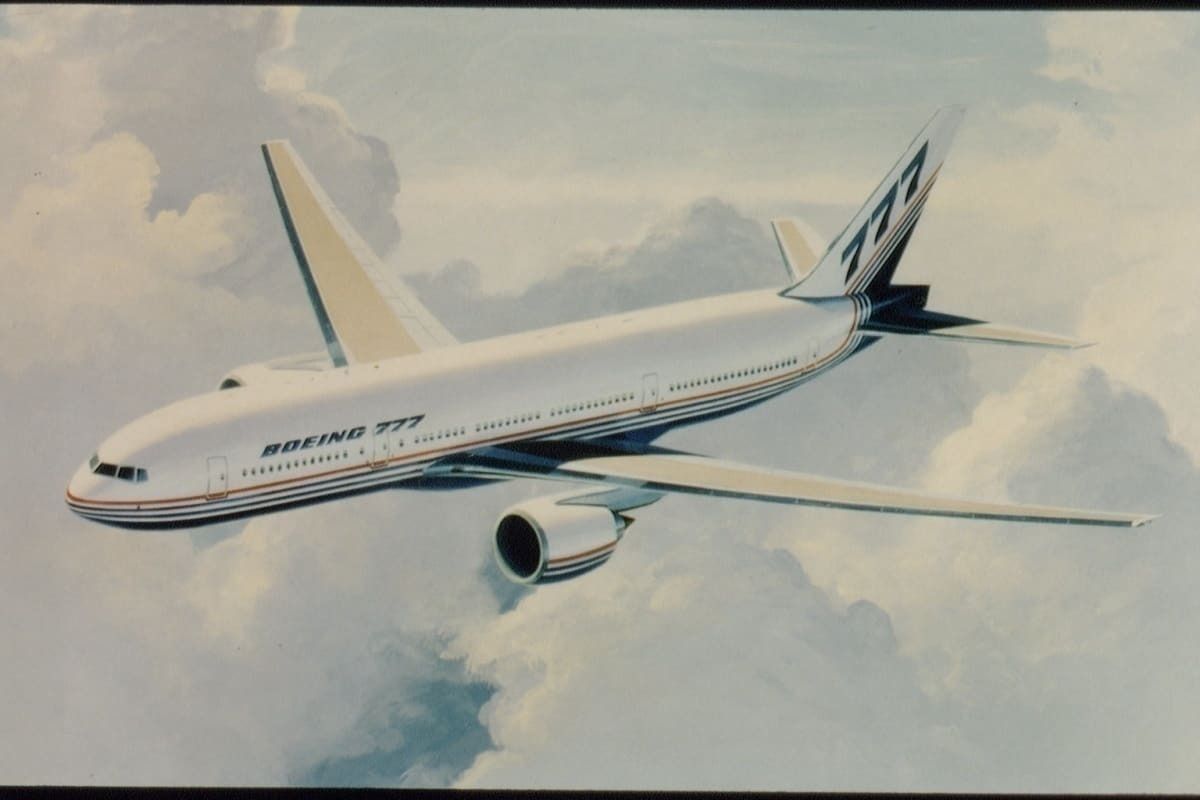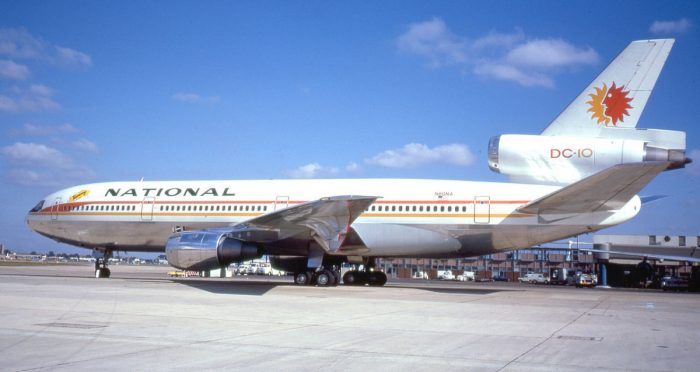Have you ever wondered why the first Boeing 777-200 is the -200 and not the -100? After all, the first Boeing 737 was the -100, and the first 747 was the -100. It turns out that the 777-100 was designed by Boeing but never built. This is why.
The first mention of the 777-100
The 777-100 comes up in history well before the 777 was launched in the late 80s. In 1978, Boeing revealed three aircraft to airline customers: the 757, the 767, and the 777-100.
The 777-100 was a trijet that looked very much like a McDonnell Douglas DC-10. Alas, when ETOPS allowed airlines to fly twin-jets over the ocean, a third engine became unnecessary and the Boeing 777-100 failed to gain any interest.
Stay informed: Sign up for our daily aviation news digest.
The failure of the 777-100 to gain orders meant that Boeing had a gap between its 767-300ER and the 747-400 on its books.
Boeing planning the 777 range
Our story moved forward a decade when Boeing launched the first of the 777 series, the 777-200.
During development, Boeing initially tried to get airlines interested in a Boeing 767X, but airlines wanted an aircraft to match the wider Airbus offerings (the A330 and A340). Boeing would come up with the 777-200, a flexible aircraft that could fill a niche between the 767 and the bigger 747. As Boeing had used the model number 777-100 back in the 1970s, they decided to skip forward to the -200, so as not to confuse customers.
Once the aircraft was released, Boeing had two choices in further development. They could shrink the length of the 777 for longer, thinner routes, or improve the takeoff weight of the original 777-200 to increase its range.
In September of 1996, Boeing completed a study of the two different 777 directions:
- A Boeing 777-100X that was long-range but at the cost of passenger capacity. This aircraft was to compete with the proposed Airbus A340-8000.
- A Boeing 777-200X that was had the same fuselage as 777-200 but with a more extended range. The plane would compete with the new-at-the-time A330-200.
"They could push us in both directions," said product marketing regional director, Daniel Olason to Flight Global in 1996. Boeing had interest from American and Asian firms for both designs and decided to shop them around.
Why was the 777-100X unsuccessful?
The 777-100X was a 250-seater Boeing 777-200 shrink that could fly a range of 8,500 nautical miles (15,725km). It would have had a 6.4 meter shorter fuselage than the 777-200, and it would have a maximum take-off weight of 300 tonnes. The same engine would have powered it as the 777-200.
When shopping around the long-range concept, airlines seemed only interested in the 777-200X with its higher take-off weight. This improvement would have a better range and reduce the cost per passenger.
"The -200X is attracting increasing interest from several carriers as it would offer an 8-9% lower seat per kilometer cost than that of the smaller capacity -100X," said Boeing in 1996.
The 777-100X didn't carry enough passengers, and the older engine technology of the 77-100X made it more expensive to run (while the -200X would go on to use engines for a future 777-300). In the end, Boeing dropped the model and went forward with the 777-200X that became the 777-200ER and a stretch that became the 777-300.
Looking at the specifications of the 777-100, we can see that Boeing recognized the change in the market (point to point) many years before Airbus. Had Boeing been successful with the 777-100 in the late 80s, they might have beaten Airbus to the A321XLR and likely the aircraft would be very popular today (like how airlines are still in love with the 767).
What do you think? Would you have liked to fly on the 777-100? Let us know in the comments.


